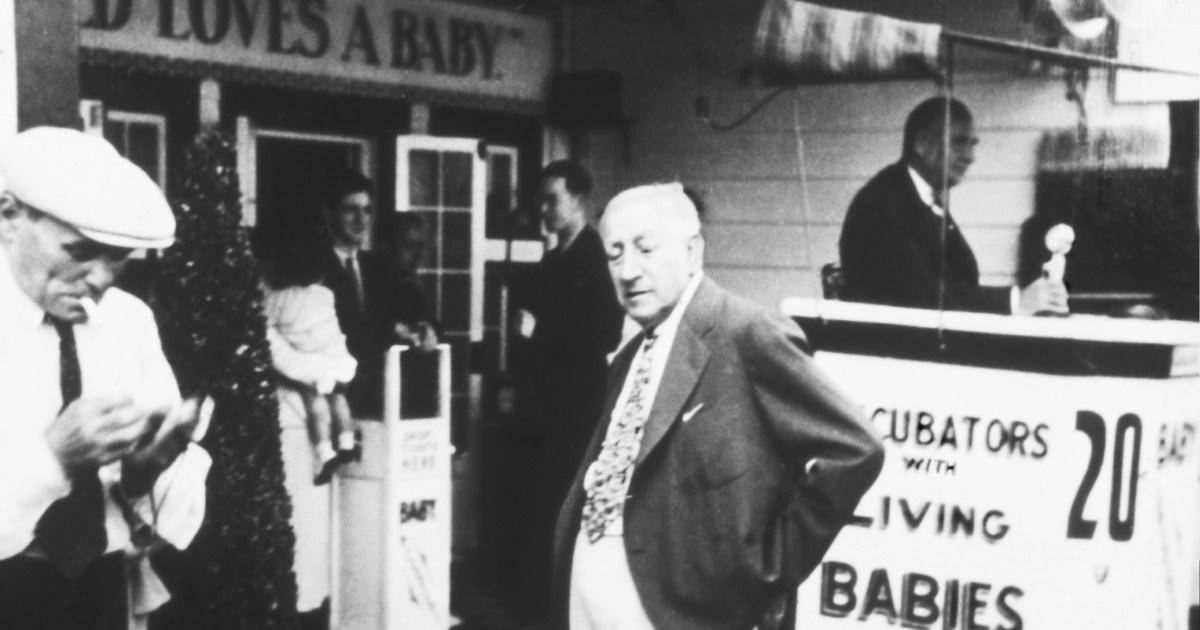World
How Dr. Martin Couney’s Incubator Shows Reshaped Infant Care

In the early twentieth century, an unconventional approach to neonatal care emerged through the efforts of Dr. Martin Couney. Operating incubator shows at fairs and exhibitions, he significantly improved the survival rates of premature infants, saving an estimated 6,500 to 7,000 babies during his career. His method, while controversial, highlighted the desperate need for better neonatal care at a time when hospitals often deemed these infants as “weaklings” with little chance of survival.
Dr. Couney’s journey began after he and his wife, a nurse, experienced the heartache of having a premature child. Recognizing the lack of resources and support for these vulnerable newborns, he established what he called a child hatchery—an early version of today’s neonatal intensive care units. Unlike traditional medical settings, these hatcheries were located in amusement parks and expositions, where visitors could pay to view the fragile infants under his care.
Despite the noble goal of saving lives, Dr. Couney’s methods drew criticism. The New York Society for the Prevention of Cruelty to Children accused him of exploiting the infants for profit, while medical journals questioned the ethics of his displays. In fact, an editorial in The Lancet likened his exhibitions to sideshows, arguing they were a grotesque spectacle rather than a genuine medical effort.
Dawn Raffel, author of The Strange Case of Dr. Couney, uncovered inconsistencies in Dr. Couney’s claims about his medical credentials. While he asserted he had trained in prestigious medical schools in Germany and France, records did not support these assertions. Nonetheless, the impact of his work was undeniable.
At the 1933-1934 Chicago World’s Fair, Dr. Couney’s incubator pavilion attracted over 1,250,000 visitors. The public was captivated by the sight of premature babies thriving in incubators, a stark contrast to the prevailing mortality rates of up to 90% in hospitals during that era. In his care, these infants boasted a survival rate of between 85% and 90%, all without any cost to their families.
Dr. Couney was not only a showman but also a pioneer in neonatal care. He employed a team of nurses and wet nurses to provide essential care and nutrition. Under his direction, the hygienic conditions of the incubators were maintained meticulously, contributing to better health outcomes compared to those in hospitals at the time. Notably, while many preemies treated in hospitals went blind due to oxygen toxicity, the infants in Dr. Couney’s care retained their eyesight, a testament to his innovative practices.
Despite his controversial methods, Dr. Couney’s legacy is significant. His work influenced future generations of medical professionals, including Dr. Julius Hess, who later became known as the father of American neonatology. Dr. Hess integrated the lessons learned from Dr. Couney into hospital practices, leading to advancements in neonatal care.
The question remains whether Dr. Couney was an exploitative showman or a visionary saving lives. Survivors of his incubator shows, now adults, offer mixed perspectives. Some recall their experiences with pride, while others reflect on the stigma surrounding their unconventional beginnings. As Raffel points out, “It can make you uneasy to think about. It’s as if there were a cure for breast cancer but you have to be in a circus to receive it.”
While the ethical implications of Dr. Couney’s methods are debated, the undeniable outcome is that he provided a lifeline for thousands of vulnerable infants at a time when little else existed. His life and work serve as a poignant reminder of the complexities surrounding medical innovation, ethics, and the lengths to which individuals will go to save lives.
-

 Entertainment3 months ago
Entertainment3 months agoAnn Ming Reflects on ITV’s ‘I Fought the Law’ Drama
-

 Entertainment4 months ago
Entertainment4 months agoKate Garraway Sells £2 Million Home Amid Financial Struggles
-

 Health2 months ago
Health2 months agoKatie Price Faces New Health Concerns After Cancer Symptoms Resurface
-

 Entertainment3 months ago
Entertainment3 months agoCoronation Street’s Carl Webster Faces Trouble with New Affairs
-

 Entertainment2 months ago
Entertainment2 months agoWhere is Tinder Swindler Simon Leviev? Latest Updates Revealed
-

 Entertainment4 months ago
Entertainment4 months agoMarkiplier Addresses AI Controversy During Livestream Response
-

 Science4 weeks ago
Science4 weeks agoBrian Cox Addresses Claims of Alien Probe in 3I/ATLAS Discovery
-

 Entertainment4 months ago
Entertainment4 months agoKim Cattrall Posts Cryptic Message After HBO’s Sequel Cancellation
-

 Entertainment2 months ago
Entertainment2 months agoOlivia Attwood Opens Up About Fallout with Former Best Friend
-

 Entertainment3 months ago
Entertainment3 months agoMasterChef Faces Turmoil as Tom Kerridge Withdraws from Hosting Role
-

 Entertainment4 months ago
Entertainment4 months agoSpeculation Surrounds Home and Away as Cast Departures Mount
-

 World2 months ago
World2 months agoCole Palmer’s Mysterious Message to Kobbie Mainoo Sparks Speculation









